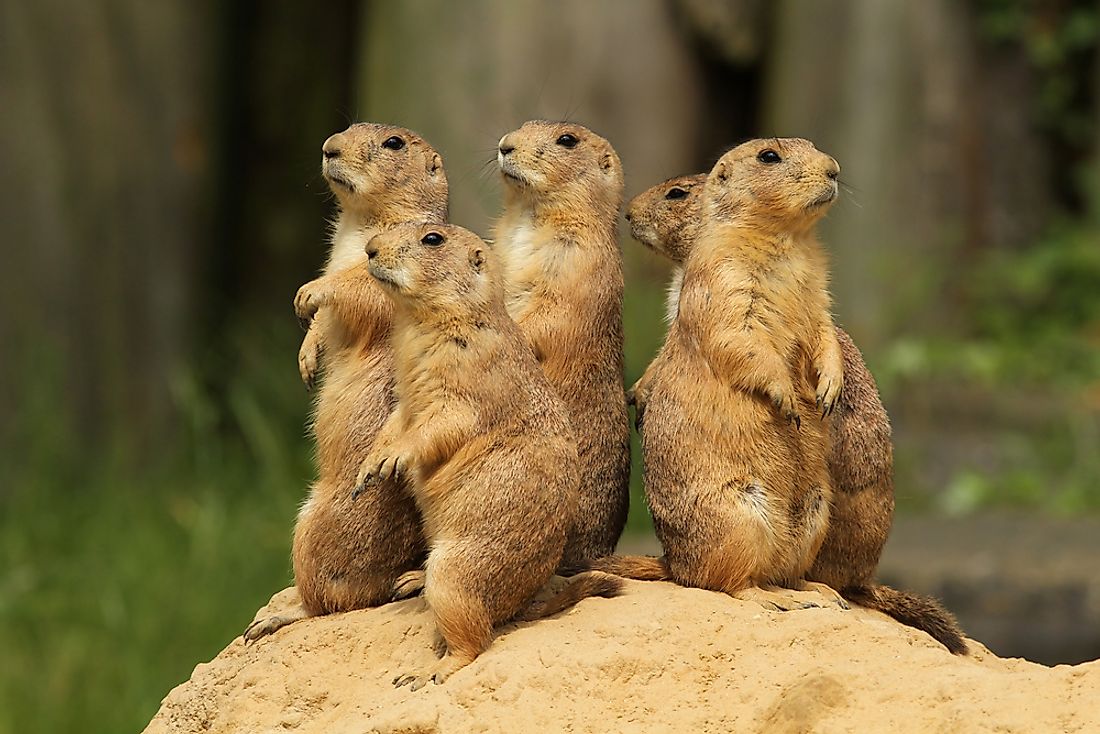Prairie Dog: Animals Of North America

5. Physical Description
The prairie dog is a diurnal, burrowing rodent that resides in the prairies and open grasslands of western North America. There are five species of prairie dogs, with the most populous of them being the black-tailed prairie dog. As adults, they stand at nearly 1 foot (~30 centimeters) tall, and their size is roughly half of that of a rabbit. It is often their brown color and plumpness that are considered to be their most distinguishing features. They generally have wide, rounded heads, hirsute tails, and stocky legs. But their name is a misnomer, as they are not at all close relatives to dogs. Instead, they are ground squirrels, with only a minor, superficial resemblance to little, chubby canine pups.
4. Diet
As diurnal creatures, prairie dogs emerge from their burrows during the day and forage until dusk. They are herbivorous, and their diets include many native plants of the Great Plains. Listed among their staples are various types of grasses, roots, seeds, forbs (flowering plants), and blossoms. They are also known to sometimes include insects in their diet. Their water intake comes entirely from the moisture in the food they consume, so access to water sources is not a major concern. They are, however, a food source themselves for many carnivorous animals, including eagles, coyotes, ferrets, badgers, and snakes.
3. Habitat and Range
Prairie dogs can be found in much of northwest Mexico, the Western US, and southwest Canada, especially within the slim bands of dry plains extending from central Texas to Canada. Their dwellings consist of deep, funnel-shaped burrows underground that typically are around 3.14 inches (8 centimeters) in diameter. They prefer to live on short-grass prairies, avoiding areas that are heavily bushy or have tall grass. The population of prairie dogs was once copious, numbering in the hundreds of millions. However, as much of the Great Plains has been converted due to livestock and crop farming interests, the prairie dog populations have been largely displaced. As a result, their population has declined over the past five decades by more than 95%, bringing their numbers down to between an estimated 10 and 20 million.
2. Behavior
One of the most fascinating characteristics of the prairie dog is their formation of colonies. They are social animals that live in large, complex webs of tunnels, which may house thousands of members and encompass many miles in all directions. The colonies are quite conspicuous, because these creatures systematically trim any surface grasses that exceed their own height. The prairie dog is a very social animal and, within colonies, they live in contiguous, territorial family groups called “coteries”. The coteries will often have about seventy burrow entrances, and usually contain three to four adult females and a single breeding adult male. Moreover, they use a sophisticated system of communication involving variously pitched warning bark calls, each of which signals a different type of predators.
1. Reproduction
Prairie dogs copulate underground, and generally mate in late January. They have a gestation period of 28 to 32 days. Within a given year, a female prairie dog will give birth to one litter consisting of 3 to 4 pups on average. While in heat, a female prairie dog may mate with up to five different males in the span of five hours, leaving pups from the same litter with different fathers. Shortly after having sniffed an estrous female and right before copulating with her, male prairie dogs produce a unique mating call, which is considered the single best indicator that a female is in heat. While their mating calls may sound similar to their anti-predator calls, the former contain fewer barks per minute and are less intense.











